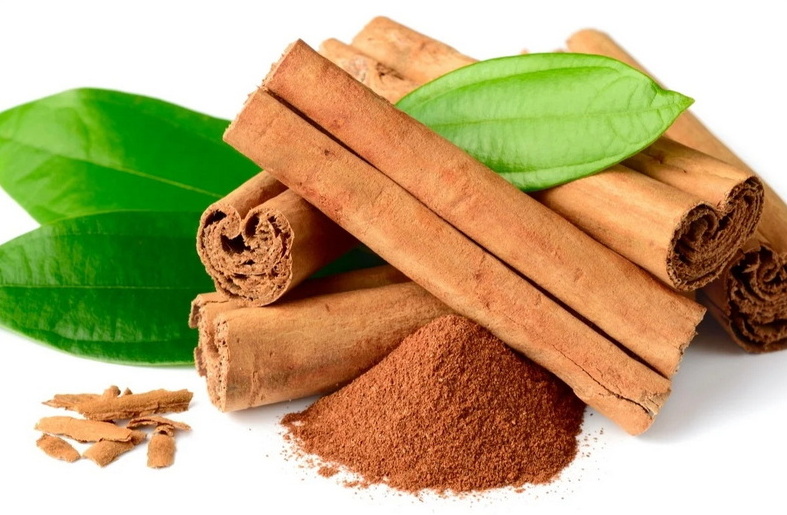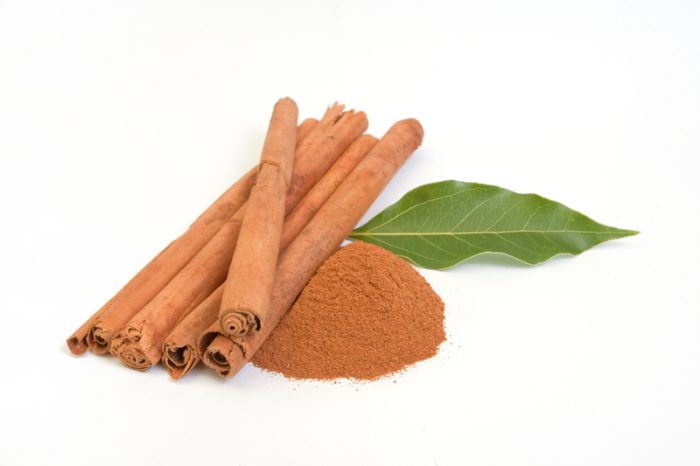Content Menu
● Introduction to Cinnamon Bark Extract
>> Phytochemical Composition
● Antioxidant Activity of Cinnamon Bark Extract
>> Comparison with Other Antioxidants
● Applications of Cinnamon Bark Extract
>> Cosmetics and Skincare
>> Food Supplements
>> Pharmaceutical Applications
● Comparison with Other Natural Antioxidants
● Potential Health Benefits
>> Anti-Inflammatory Effects
>> Antimicrobial Activity
>> Cardiovascular Health
>> Neuroprotective Effects
● Future Research Directions
>> Therapeutic Applications
>> Mechanisms of Action
>> Safety and Toxicity
>> Sustainable Production
● Conclusion
● FAQs
>> 1. What are the primary phytochemicals in cinnamon bark extract?
>> 2. How does cinnamon bark extract compare to vitamin C in terms of antioxidant activity?
>> 3. What are some common applications of cinnamon bark extract?
>> 4. Does cinnamon bark extract have anti-inflammatory properties?
>> 5. Can cinnamon bark extract be used to lower blood glucose levels?
● Citations:
Cinnamon, a spice derived from the bark of the Cinnamomum tree, has been widely recognized for its culinary and medicinal properties. Among its various uses, cinnamon bark extract is particularly noted for its potent antioxidant activity. This article delves into the properties of cinnamon bark extract, its comparison with other antioxidants, and its potential applications in health and wellness.

Introduction to Cinnamon Bark Extract
Cinnamon bark extract is obtained from the bark of the Cinnamomum tree, primarily Cinnamomum verum (Ceylon cinnamon) and Cinnamomum cassia (Chinese cinnamon). The extraction process often involves solvents like ethanol, which helps in isolating the bioactive compounds responsible for its antioxidant properties.
Phytochemical Composition
The phytochemical screening of cinnamon bark extract reveals the presence of alkaloids, saponins, tannins, triterpenoids, and flavonoids. These compounds contribute to its antioxidant activity, which is crucial for neutralizing free radicals and protecting against oxidative stress-related diseases.
Phytochemicals in Cinnamon Bark
| Phytochemicals | Role |
| Alkaloids | Various biological activities |
| Saponins | Antioxidant and anti-inflammatory |
| Tannins | Astringent and antioxidant |
| Triterpenoids | Anti-inflammatory and antioxidant |
| Flavonoids | Strong antioxidant activity |
Antioxidant Activity of Cinnamon Bark Extract
The antioxidant activity of cinnamon bark extract is typically evaluated using the DPPH (2,2-diphenyl-1-picrylhydrazyl) radical scavenging assay. This method measures the ability of the extract to neutralize free radicals by donating electrons to stabilize them. Studies have shown that cinnamon bark extract exhibits a strong antioxidant activity with an IC50 value of approximately 25.35 ppm.
Comparison with Other Antioxidants
When compared to vitamin C, which has an IC50 value of about 3.19 ppm, cinnamon bark extract shows a slightly lower potency but remains a strong antioxidant. This makes it a valuable natural alternative for use in various applications, including food supplements and cosmetics.
Antioxidant Activity Comparison
| Antioxidant | IC50 Value (ppm) |
| Vitamin C | 3.19 |
| Cinnamon Bark | 25.35 |
Applications of Cinnamon Bark Extract
Cosmetics and Skincare
Cinnamon bark extract is used in cosmetic preparations due to its antioxidant properties, which help protect the skin from oxidative damage and promote healthier skin. Products like body scrubs, showers, and moisturizers often include cinnamon extract for its benefits.
Food Supplements
As a dietary supplement, cinnamon bark extract is valued for its potential health benefits, including lowering blood glucose and cholesterol levels. Its antioxidant properties also contribute to reducing oxidative stress, which can help mitigate chronic diseases.
Pharmaceutical Applications
In pharmaceuticals, cinnamon bark extract is explored for its anti-inflammatory and anticancer properties, making it a promising ingredient in the development of therapeutic agents.

Comparison with Other Natural Antioxidants
While cinnamon bark extract is potent, other natural antioxidants like green tea extract and grape seed extract also offer strong antioxidant activities. Green tea, for instance, contains catechins, which are highly effective in scavenging free radicals.
Comparison of Natural Antioxidants
| Antioxidant | Source | Antioxidant Activity |
| Cinnamon Bark | Cinnamomum spp. | High |
| Green Tea | Camellia sinensis | Very High |
| Grape Seed | Vitis vinifera | High |
Potential Health Benefits
Anti-Inflammatory Effects
Cinnamon bark extract has been shown to possess anti-inflammatory properties, which can help reduce inflammation and alleviate symptoms associated with inflammatory diseases. This is particularly beneficial for conditions like arthritis and other inflammatory disorders.
Antimicrobial Activity
The extract also exhibits antimicrobial activity, which can aid in preventing infections and promoting wound healing. This property makes it useful in skincare products and oral care formulations.
Cardiovascular Health
Cinnamon bark extract may help improve cardiovascular health by reducing blood pressure and cholesterol levels. Its antioxidant properties contribute to reducing oxidative stress in the cardiovascular system, potentially lowering the risk of heart disease.
Neuroprotective Effects
Some studies suggest that cinnamon bark extract may have neuroprotective effects, which could help in managing neurodegenerative diseases such as Alzheimer's and Parkinson's. The antioxidants in cinnamon may protect neurons from oxidative damage, thereby supporting brain health.
Potential Health Benefits of Cinnamon Bark Extract
| Benefit | Mechanism of Action |
| Anti-Inflammatory | Reduces inflammation |
| Antimicrobial | Inhibits microbial growth |
| Cardiovascular | Lowers blood pressure and cholesterol |
| Neuroprotective | Protects neurons from oxidative damage |
Future Research Directions
Therapeutic Applications
Cinnamon bark extract's potential therapeutic applications are vast, ranging from managing metabolic disorders to reducing the risk of chronic diseases. Its anti-inflammatory and antioxidant properties make it a promising candidate for developing treatments for conditions like diabetes, cardiovascular diseases, and neurodegenerative disorders.
Mechanisms of Action
Understanding the precise mechanisms by which cinnamon bark extract exerts its effects is crucial for optimizing its therapeutic potential. Research into its bioavailability, metabolism, and interaction with biological systems will provide valuable insights into how it can be effectively utilized in clinical settings.
Safety and Toxicity
While cinnamon bark extract is generally considered safe, comprehensive studies on its long-term safety and potential toxicity are necessary. This includes evaluating its effects on liver and kidney function, as well as its interaction with other medications.
Sustainable Production
As demand for cinnamon bark extract increases, sustainable production practices will become essential. This involves ensuring that the harvesting of cinnamon bark does not harm the environment or deplete natural resources.
Future Research Directions for Cinnamon Bark Extract
| Area of Research | Importance |
| Therapeutic Applications | Expanding treatment options |
| Mechanisms of Action | Optimizing efficacy |
| Safety and Toxicity | Ensuring long-term safety |
| Sustainable Production | Environmental stewardship |
Conclusion
Cinnamon bark extract is a potent natural antioxidant with diverse applications in cosmetics, food supplements, and pharmaceuticals. Its strong antioxidant activity, coupled with other bioactive compounds, makes it a valuable ingredient for promoting health and wellness. While it may not be the "best" natural antioxidant in terms of potency compared to others like green tea, its unique combination of properties and uses positions it as a significant player in the antioxidant market.
In conclusion, while cinnamon bark extract holds significant promise as a natural antioxidant, further research is needed to fully explore its therapeutic potential and ensure its sustainable production. By advancing our understanding of its mechanisms of action, safety profile, and environmental impact, we can unlock its full benefits for human health and the environment.

FAQs
1. What are the primary phytochemicals in cinnamon bark extract?
Cinnamon bark extract contains alkaloids, saponins, tannins, triterpenoids, and flavonoids, which contribute to its antioxidant activity.
2. How does cinnamon bark extract compare to vitamin C in terms of antioxidant activity?
Cinnamon bark extract has an IC50 value of about 25.35 ppm, which is less potent than vitamin C (IC50 value of approximately 3.19 ppm), but it remains a strong antioxidant.
3. What are some common applications of cinnamon bark extract?
Cinnamon bark extract is used in cosmetics, food supplements, and pharmaceuticals due to its antioxidant, anti-inflammatory, and potential therapeutic benefits.
4. Does cinnamon bark extract have anti-inflammatory properties?
Yes, cinnamon bark extract is known for its anti-inflammatory properties, which are beneficial in reducing inflammation and promoting overall health.
5. Can cinnamon bark extract be used to lower blood glucose levels?
Studies suggest that cinnamon extracts can help lower blood glucose levels, although more research is needed to confirm its efficacy in this area.
Citations:
[1] https://ijstm.inarah.co.id/index.php/ijstm/article/download/739/666
[2] https://www.frontiersin.org/journals/chemistry/articles/10.3389/fchem.2023.1194389/full
[3] https://patents.google.com/patent/CN107136504A/zh
[4] https://pmc.ncbi.nlm.nih.gov/articles/PMC6268419/
[5] https://pmc.ncbi.nlm.nih.gov/articles/PMC4003790/
[6] https://patents.google.com/patent/CN113209193A/zh
[7] https://pmc.ncbi.nlm.nih.gov/articles/PMC9914695/
[8] https://www.mdpi.com/1999-4907/12/5/648
[9] https://patents.google.com/patent/TW202000192A/en
[10] https://pmc.ncbi.nlm.nih.gov/articles/PMC9602362/






























